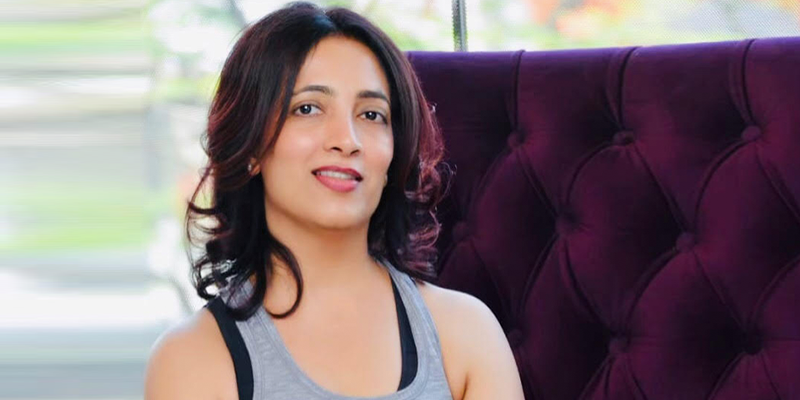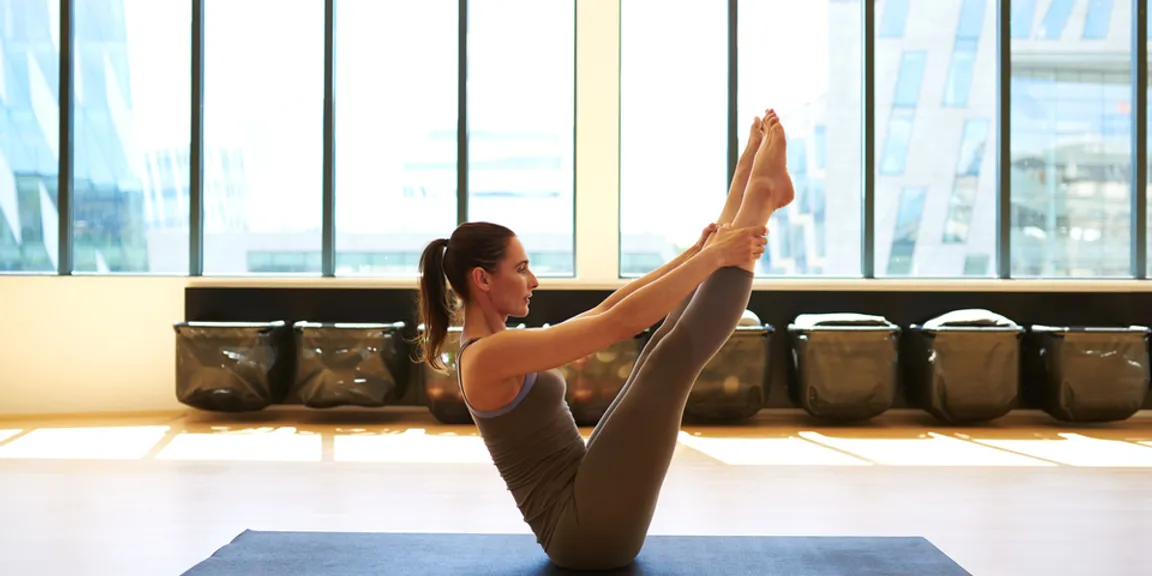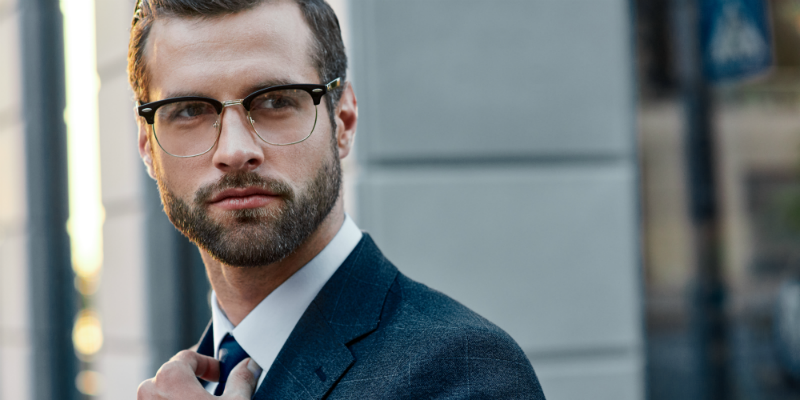Busting 10 myths about Pilates
If you have been planning to take up Pilates as part of your fitness regimen, you need to know all your facts. Here are some of the myths about Pilates that you need to dispel before getting into this excellent fitness routine…
Classical Pilates is basically a disciplined movement practice that was created in the early 20th Century by German Anatomist Joseph Pilates. The method involves an intensive understanding of the human musculoskeletal system in order to achieve a full body and mind workout without strain or injury.
This exercise regime targets all muscle groups in the body whilst working on posture, functionality and flexibility. Pilates is also a very mindful training practice that aids relief to stress through deep breathing, which is also one of the key principles of Pilates.
There are endless adaptations of Pilates that are currently offered at studios and gyms all over the word, but Classical Pilates is the authentic form or the purist version of Pilates that is practiced the most.
Many people have certain doubts about Pilates. Here is a checklist of myths you need to dismiss before you launch into a Pilates programme. Read on….
1. Pilates is like yoga
While both Pilates and yoga work towards the goal of uniting the mind, body and spirit, the movement approach in both these techniques vary.
For starters both these movement practices follow different breathing styles. Pilates was originally developed to rehabilitate the injured while yoga is seen as a path to spiritual enlightenment through a series of asanas. In contrast to yoga, Pilates is practised on a mat as well as with several other resistance-based equipment.
2. Pilates is only for women
This is a very common misconception as many people believe that Pilates is only for women. In fact, Joseph Pilates, a German fitness enthusiast and a self-taught athlete was a man. Not many are aware that this exercise regime was originally intended for men. Joseph Pilates rehabilitated prisoners of war and helped many soldiers recover from their injuries using his method of ‘Contrology’.
Men normally engage in high impact exercise regimes which mostly activates one’s dominant muscle groups which in turn creates muscle imbalances. The non-dominant muscles tend to become tight, weak and prone to injuries. Practising Pilates regularly helps in lengthening and strengthening the muscles correctly, increases the range of motion in the joints and promotes overall development of the body. Famous male athletes like Tiger Woods, Kobe Bryant, Cristiano Ronaldo and LeBron James do Pilates regularly to stay injury-free.
3. Pilates is all about building core strength
Pilates has a comprehensive list of benefits that goes beyond just core strength. Pilates aims at uniform development of the body. It improves posture, flexibility, muscle endurance, coordination, balance and strength.

A Pilates class in session
Pilates does build core strength but the exercise regimen is for the whole body. Joseph Pilates believed that integrating the body and using every tiny little muscle to perform a movement, would make the movement more efficient. This in turn creates a system of functional strength to all movements in the human body and just not while exercising.
4. One needs to be flexible to do Pilates
This is a myth as people do not have to be flexible to do Pilates. Flexibility is one of the benefits of practising Pilates regularly. The Pilates exercise regime is geared to improve flexibility and a greater range of motion. And for people who are hyper-mobile or who are overly flexible, the core conditioning creates joint stability and for them the goal would be to towards balance of strength and flexibility. Exercises in Pilates can be modified to suit each Practitioner’s flexibility level.
5. Pilates can be practised and taught by watching videos and attending short workshops

Pilates is a sophisticated movement practice
Pilates is a very sophisticated movement practice and is highly instruction driven. It is just not an exercise regime that can be copied by watching Video’s and attending big Group setting classes. One requires a good understanding and extensive study of Human Anatomy to be able to teach Pilates. Additionally, it is imperative for instructors to be trained with different Pilates equipment and props, carry an eye for detail in identifying movement patterns in a body and adopt teaching skills to work with people with different abilities.
It is mostly practitioners who have experienced Pilates and its benefits for years in their own bodies, who turn to studying and teaching Pilates in the long run. To qualify to be a Pilates Instructor, one needs to go through a minimum of 450+ hours of Teacher Training Program along with good apprentice experience. Continued education also plays a big part in developing towards being a good Teacher.
6. One needs to be fit to do Pilates
Pilates is a very versatile form of exercise regime. It can be safely practised by everyone including active agers, children, those requiring rehabilitation, mums to be and just about anyone looking to get fit and stay injury free. Pilates is widely taught by physical therapists across the world to those suffering from scoliosis, arthritis, osteoporosis and any skeletal or muscular degenerative disease. All exercises can be modified to suit every individual’s goal or ability.
7. Doing Pilates solely can help you lose weight
Pilates is a conditioning programme with a lot of health benefits and also complements any other fitness regime one chooses to do towards losing weight. Doing Pilates with a focus to lose weight is not right. Shedding excess weight requires a good amount of cardio-vascular activity coupled with a healthy diet and lifestyle.
8. Pilates is easy and one does not break into a sweat
One tends to find Pilates easy if they are not doing the exercises the way it is meant to be done or they are not being instructed and spotted by their Teacher correctly. One needs to engage both dominant and non-dominant muscles to be able to do Pilates in good form. Pilates is not a superficial form of exercise; the work is extremely deep and the breathing mechanism used while exercising is good enough for one to break into a sweat. If the fundamentals or the principles of Pilates – Breath, Control, Concentration, Centering, Precision and Flow is not being incorporated while exercising, then it is not Pilates. Since Pilates is a mindful practice and, in the process, practitioners learn to become aware of their bodies, exercises can be challenging and simultaneously rejuvenating for all fitness levels.
9. Pilates is boring
Those who practise Pilates regularly and enjoy an invigorating physical activity, would never agree to Pilates being boring. One has to stay mentally agile while doing Pilates because it is highly instruction driven. Movement is extremely controlled and mindful. Engaging oneself mentally is equally important as engaging the body. A good Pilates teacher always uses a lot of imagery in her/his teaching to make the lesson interesting and at the same time truly beneficial to the client.

Pilates uses slow and controlled movements
10. Pilates is done only on the mat and the reformer
Pilates is just not about Mat-work or the reformer (an exercise machine). Exercises are practised in many different positions – lying supine, lying prone, sitting and standing likewise Joseph Pilates created many pieces of resistance and support based equipment that he used in his method of ‘Contrology’. Apart from the mat and reformer, the other machines that are commonly used are the Tower, the Cadillac, the Wunda Chair, the Ladder Barrel and different sizes of Spine Corrector’s along with resistance and support based props.
Why should you take up Pilates?
Pilates is a low intensity support and resistance-based exercise regime that is designed to strengthen, lengthen and restore one’s body’s balance. It promotes overall development of the body with a mindful and holistic approach.
Practising Pilates alone and expecting to shed those extra kilos might not be a good idea after all. Classical or Traditional Pilates Studio’s around the world will never promote Pilates as a weight loss programme. Losing weight mostly depends on the kind of lifestyle one leads, from being very active to less active and totally sedentary.
One needs to combine Pilates with a healthy diet along with an adequate amount of Cardio based regimes like running, walking, swimming or cycling to be able to lose weight and maintain the same.
Apart from all of the constant health benefits that Pilates Practitioners constantly experience in their bodies, they will definitely feel and see changes physically as well. With regular Pilates, one will feel a lot taller, toned, lengthened and energised. I have a lot of clients who practise Pilates at-least twice a week who tell me that their clothes fit better and they feel more confident in their bodies.
Pilates teaches the body more efficient and balanced movements, which in turn improves flexibility, coordination and integration. It does not induce inflammation or overuse of specific muscle groups like most other fitness regimes do. It focuses on strengthening the deep supporting structures of the body and improves the quality of movement in all walks of life, thereby preventing injuries. Hence Pilates complements and supports all other fitness regimes that one chooses to do to help attain weight loss goals.









